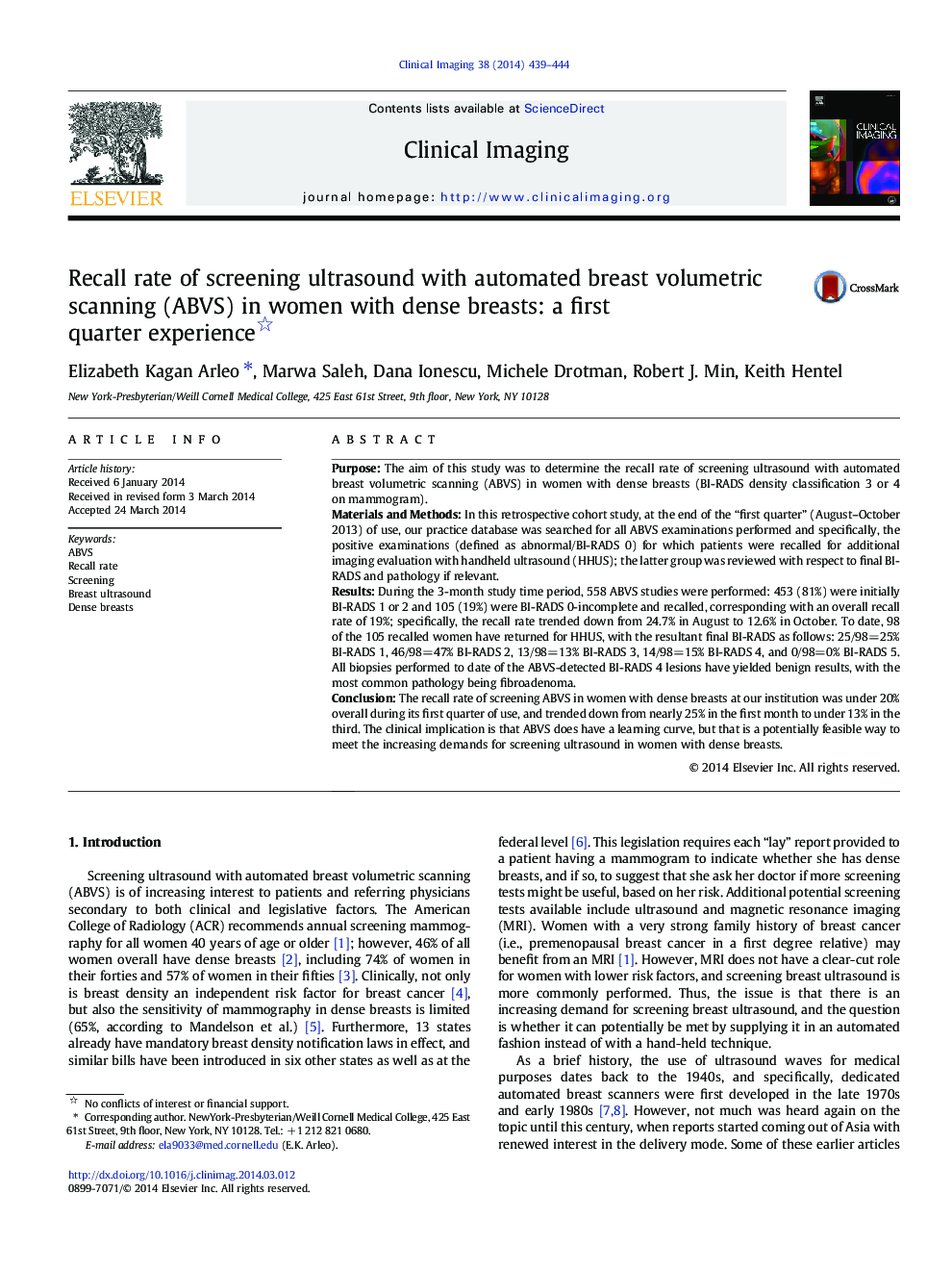| Article ID | Journal | Published Year | Pages | File Type |
|---|---|---|---|---|
| 4222179 | Clinical Imaging | 2014 | 6 Pages |
PurposeThe aim of this study was to determine the recall rate of screening ultrasound with automated breast volumetric scanning (ABVS) in women with dense breasts (BI-RADS density classification 3 or 4 on mammogram).Materials and MethodsIn this retrospective cohort study, at the end of the “first quarter” (August–October 2013) of use, our practice database was searched for all ABVS examinations performed and specifically, the positive examinations (defined as abnormal/BI-RADS 0) for which patients were recalled for additional imaging evaluation with handheld ultrasound (HHUS); the latter group was reviewed with respect to final BI-RADS and pathology if relevant.ResultsDuring the 3-month study time period, 558 ABVS studies were performed: 453 (81%) were initially BI-RADS 1 or 2 and 105 (19%) were BI-RADS 0-incomplete and recalled, corresponding with an overall recall rate of 19%; specifically, the recall rate trended down from 24.7% in August to 12.6% in October. To date, 98 of the 105 recalled women have returned for HHUS, with the resultant final BI-RADS as follows: 25/98=25% BI-RADS 1, 46/98=47% BI-RADS 2, 13/98=13% BI-RADS 3, 14/98=15% BI-RADS 4, and 0/98=0% BI-RADS 5. All biopsies performed to date of the ABVS-detected BI-RADS 4 lesions have yielded benign results, with the most common pathology being fibroadenoma.ConclusionThe recall rate of screening ABVS in women with dense breasts at our institution was under 20% overall during its first quarter of use, and trended down from nearly 25% in the first month to under 13% in the third. The clinical implication is that ABVS does have a learning curve, but that is a potentially feasible way to meet the increasing demands for screening ultrasound in women with dense breasts.
